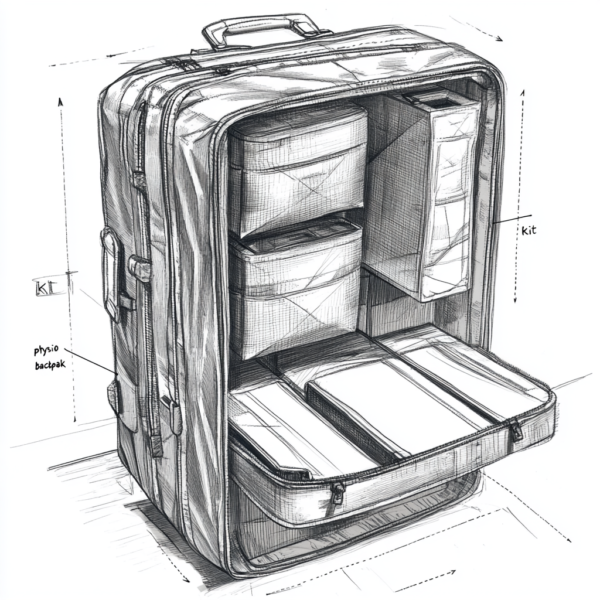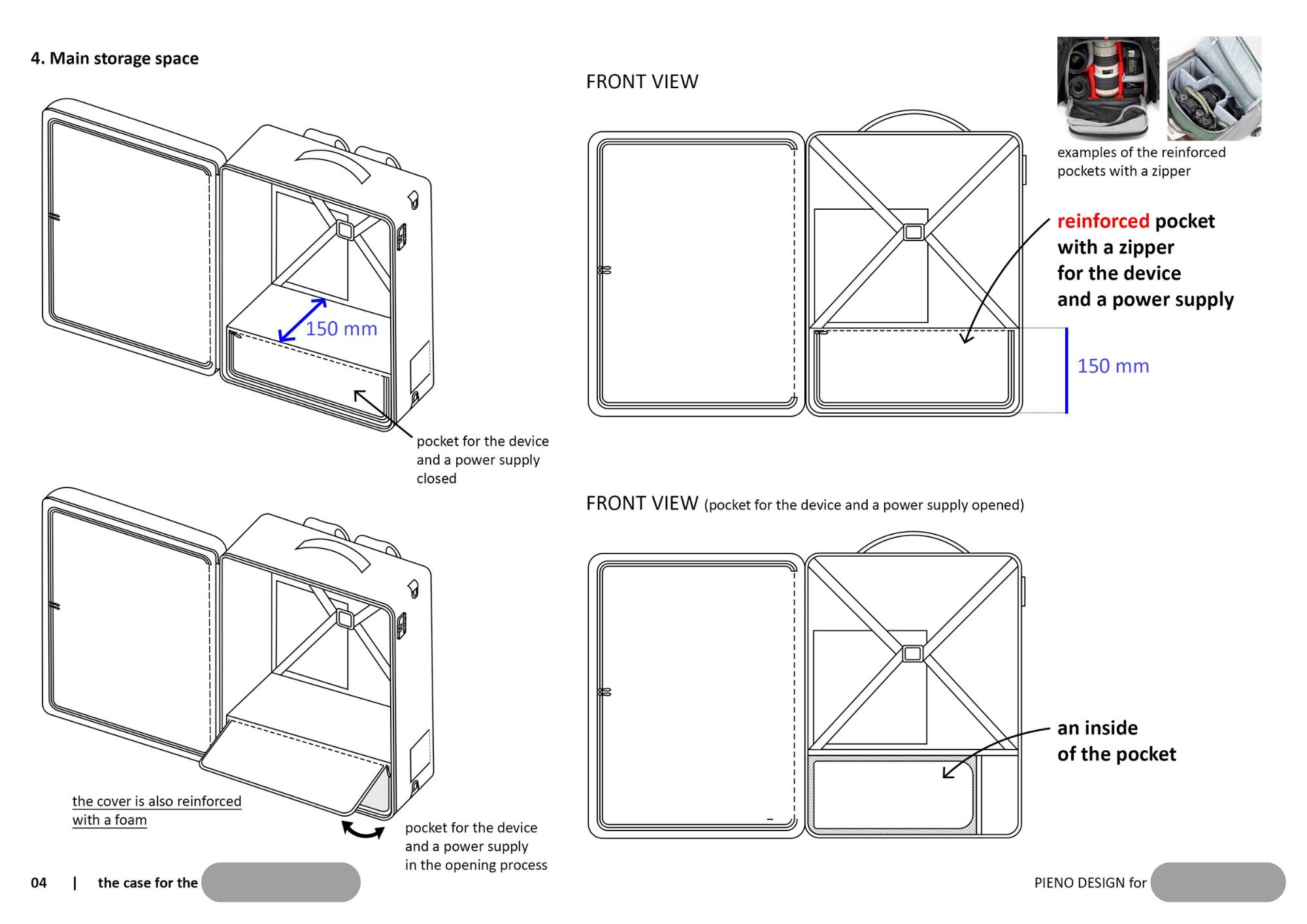1. Research Phase
To gain a deep understanding of physiotherapists' needs and pain points, we conducted extensive research, including:
User Interviews: We interviewed physiotherapists to understand their daily routines, the equipment they carry, and the challenges they face.
Field Observations: We observed physiotherapists in various settings to identify how they interact with their equipment and how they carry it.
Needs Analysis: We analyzed the specific requirements for a physiotherapy backpack, such as the need for easy access to essential tools, comfort during extended wear, and durability to withstand daily use.
A key insight from our research was that many physiotherapists often perform treatments without fully removing their equipment from the backpack. This behavior highlighted the need for a design that allows for easy access to essential tools while the backpack remains on the therapist's back.







